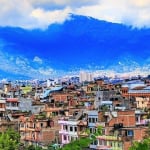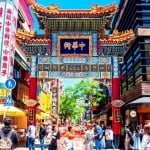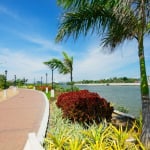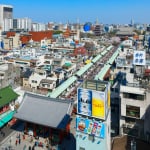Name: Mount Yoshino
Address: Yoshinoyama, Yoshino Town, Yoshino District, Nara Prefecture
Official Website: https://goo.gl/YngNfz
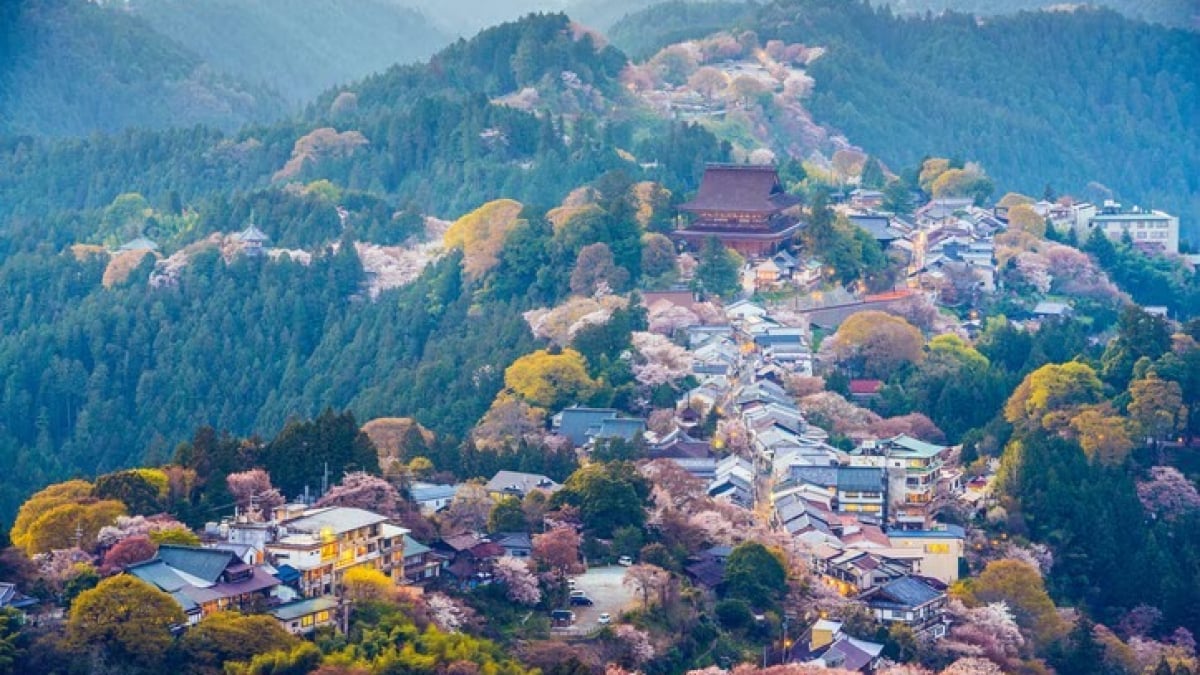
8 must-visit tourist spots in Yoshino Town that let you rediscover the beauty of Japan
Yoshino Town, located in Yoshino District, Nara Prefecture, is famously known as one of Japan’s top cherry blossom viewing spots. Situated in a mountainous region rich in nature, the town attracts countless visitors each year during cherry blossom season, creating a lively and festive atmosphere. Yoshino is also a sacred site for Shugendo (Japanese mountain asceticism), and is home to many temples and shrines.
But Yoshino’s beauty isn’t limited to its cherry blossoms. In summer, the fresh green leaves flourish; in autumn, vibrant foliage paints the landscape; and in winter, the area transforms under a blanket of snow. Its seasonal beauty is widely recognized, even earning it membership in the "Association of The Most Beautiful Villages in Japan." Additionally, the area around Mount Yoshino is packed with tourist spots—including traditional inns—making it easy to visit multiple destinations in a short amount of time.
In this guide, we’ll introduce some of the must-visit spots in Yoshino, carefully selected from among its many attractions.
table of contents
[x] close
8 must-visit tourist spots in Yoshino Town that let you rediscover the beauty of Japan
- 1. The Cherry Blossoms of Mount Yoshino – A Sight You Can't Talk About Yoshino Without
- 2. Be Awed by the Symbol of Mount Yoshino: Kinpusen-ji Temple
- 3. A Blissful Moment: Admiring the Cherry Blossoms from an Open-Air Bath at "Yoshinoyama Onsen Hounoya"
- 4. Try Nara’s Local Specialty: Kakinoha-zushi at “Hiraso Main Store”
- 5. Visit “Miyataki,” Loved by Poets of the Manyoshu
- 6. The Only Sightseeing Boat in Nara! “Lake Tsuburo”
- 7. Experience Ancient Craftsmanship in “Kuzu-no-Sato”
- 8. Be Captivated by “Hitome Senbon” from the Grounds of “Yoshimizu Shrine”
- ◎ Summary
1. The Cherry Blossoms of Mount Yoshino – A Sight You Can't Talk About Yoshino Without
When it comes to Yoshino tourism, the cherry blossoms of Mount Yoshino are the absolute highlight. This is a renowned sightseeing destination known since ancient times. From early to late April, tourists from all over Japan flock to Yoshino just to see the cherry blossoms.
Around 30,000 cherry trees cover Mount Yoshino. From Shimo Senbon (lower 1,000 trees) to Naka Senbon (middle), Kami Senbon (upper), and Oku Senbon (inner), the trees bloom gradually up the mountain, creating a magnificent, layered spectacle. The breathtaking beauty is often described as “Hitome Senbon,” meaning “a thousand trees at a glance.” At night, the trees are illuminated, creating a magical and ethereal atmosphere.
To reach Mount Yoshino, take the Kintetsu Limited Express to Yoshino Station, then ride the ropeway—said to be the oldest in Japan. Once you step off the ropeway, you'll be overwhelmed by the sheer beauty of the cherry blossoms.
2. Be Awed by the Symbol of Mount Yoshino: Kinpusen-ji Temple
Kinpusen-ji Temple is the symbol of Mount Yoshino and the head temple of Shugendo (mountain asceticism). It is said to have been founded in the late 7th century by En no Gyōja, the founder of Shugendo. In 2004, the main hall Zao-do and the Niomon Gate were registered as UNESCO World Heritage Sites under the “Sacred Sites and Pilgrimage Routes in the Kii Mountain Range.”
The main hall, Zao-do, built in the traditional irimoya (hip-and-gable) style with a cypress bark roof, stands at 34 meters high and 36 meters on each side. It is the second-largest wooden structure after the Great Buddha Hall of Todai-ji. The building’s stately yet graceful appearance continues to captivate visitors.
One of the highlights is the temple’s principal deities: three statues of Kongo Zao Gongen housed in a zushi (miniature shrine), each towering at 7 meters high. The vivid blue color of the statues is unique and deeply impressive. Though usually not on public display, a special viewing period is held for about one month each year.
Name: Kinpusen-ji Temple
Address: Yoshinoyama, Yoshino Town, Yoshino District, Nara Prefecture
Official Website: http://www.kinpusen.or.jp/index.html
3. A Blissful Moment: Admiring the Cherry Blossoms from an Open-Air Bath at "Yoshinoyama Onsen Hounoya"
“Yoshinoyama Onsen Hounoya” features rooms built with beautifully grained Yoshino cedar and offers views of the cherry blossoms from its open-air baths. Located in a prime spot overlooking the entire Mount Yoshino area, it’s the definition of luxury. The springtime view of the Naka Senbon from the outdoor bath “Aun-no-Yu” is simply breathtaking.
In autumn, you can enjoy the sweeping views of colorful fall foliage. It’s a luxury beyond compare. After the bath, indulge in Ayurveda treatments. The combination of hot spring bathing and Ayurvedic therapy will deeply rejuvenate your body and soul.
“Hounoya” is ideally located as a base for sightseeing in Yoshino, making it a must-check-out inn if you plan to visit. They also offer day-use bathing without the need for reservations, which is perfect if overnight accommodations are fully booked.
Please note that during the cherry blossom season in April, traffic restrictions are in place, and private vehicles are not allowed in the area.
Name: Yoshinoyama Onsen Hounoya
Address: Naka Senbon Park, Yoshinoyama, Yoshino Town, Yoshino District, Nara Prefecture
Official Website: http://www.hounoya.gr.jp/
4. Try Nara’s Local Specialty: Kakinoha-zushi at “Hiraso Main Store”
When it comes to Yoshino specialties, Kakinoha-zushi—sushi wrapped in persimmon leaves—is a must-try. This local dish was developed so people in landlocked Nara could still enjoy eating fish. In Yoshino, this sushi is made by salting precious fish to preserve it, wrapping it in persimmon leaves to prevent drying, and using a weighted press to remove excess air and encourage fermentation.
Today, persimmon leaves are known not only for their excellent antibacterial and antioxidant properties, but also for being rich in vitamin C and tannins (a type of polyphenol). The blue-backed fish used in Kakinoha-zushi are also known to contain nutrients that help prevent arteriosclerosis. Kakinoha-zushi truly combines the blessings of both sea and mountain with the wisdom of the ancestors.
There are many famous Kakinoha-zushi shops in Yoshino, but one highly recommended for both taste and aroma is the long-established Hiraso. Founded in 1861 (the first year of the Bunkyū era), Hiraso has preserved its traditional flavors since the late Edo period. In 1951, it even served sweetfish sushi to the Emperor Shōwa.
Before starting your sightseeing in Mount Yoshino, fill up with a meal at Hiraso. Since Kakinoha-zushi has a shelf life of three days from the day it’s made, it also makes for a great gift or souvenir—perfect to enjoy while reminiscing about your trip.
Name: Hiraso Main Store
Address: 614 Iigai, Yoshino Town, Yoshino District, Nara Prefecture
Official Website: http://www.hiraso.jp/
5. Visit “Miyataki,” Loved by Poets of the Manyoshu
Miyataki is a scenic spot known for its unique landscape, where massive and oddly shaped rocks line both banks of the Yoshino River—some said to be as tall as 7 meters. The water shimmers a beautiful emerald green. It is believed that the Yoshino Detached Palace stood here during the Asuka period, and many poets were captivated by its beauty, writing verses included in the Manyoshu and Kaifuso anthologies. Today, visitors come to enjoy the same stunning scenery.
Although “taki” (meaning waterfall) is part of its name, Miyataki doesn’t actually have a waterfall. Instead, “taki” refers to “tagitsu”—describing the powerful, rushing movement of water. Incidentally, the spot where the Elephant Stream merges into the Yoshino River is poetically called Yume no Wada (“The Crossing of Dreams”).
Archaeological digs have uncovered pottery and stone tools from the Jomon, Yayoi, and Kofun periods, as well as remains of structures believed to have been visited frequently by Emperors Tenmu and Jitō.
If you’re a history enthusiast, visit the Yoshino Historical Museum near Yume no Wada. The museum features artifacts from the Miyataki site, including earthenware and stone tools, with easy-to-understand illustrations and photographs.
Name: Miyataki
Address: Miyataki, Yoshino Town, Yoshino District, Nara Prefecture
Official Website: http://www.yoshinoyama-sakura.jp/sightseeing.php
6. The Only Sightseeing Boat in Nara! “Lake Tsuburo”
When people think of Nara, they often imagine the temples and shrines of Mount Yoshino—but there are also places where you can enjoy lake activities. One of these is Lake Tsuburo, a man-made reservoir originally created by damming the Furo River, now developed into a tourist destination. Surrounded by nature, visitors can enjoy fishing and boating, including Nara’s only sightseeing boat.
You can also walk along the 240-meter-long suspension bridge or take a stroll along the walking trails. Cycling is another great option. Whether it’s cherry blossoms in spring, fresh greenery in summer, or autumn foliage, each season offers its own beautiful sights.
Lake Tsuburo is also known as the birthplace of Herabuna (crucian carp) fishing among dam lakes in the Kansai area. In addition to Herabuna, the lake is also home to smelt (Wakasagi), carp, and black bass, making it a popular fishing spot during tourist season, with tournaments regularly held. A dome pier exclusively for smelt fishing has recently been completed, so visitors can enjoy fishing even during winter without worrying about the cold.
Be sure to stop by Lake Tsuburo in between your temple and shrine visits—you’ll discover a different, equally captivating side of Yoshino.
Name: Lake Tsuburo
Address: Kawaraya, Yoshino Town, Yoshino District, Nara Prefecture
Official Website: http://tuburoko.jp/index.php?FrontPage
7. Experience Ancient Craftsmanship in “Kuzu-no-Sato”
Near the confluence of the Yoshino River and the Takami River lies Kuzu-no-Sato. Located about a 20-minute drive from Mount Yoshino, this area has a long and storied history—Kuzu people even appear in ancient texts like the Kojiki and Nihon Shoki.
Kuzu-no-Sato is a village of craftsmanship. The area is home to several factories producing Yoshino waribashi (disposable chopsticks) using scrap wood efficiently. Made from high-quality Yoshino lumber, these chopsticks are considered premium-grade and are known for enhancing the flavor of food. They have developed alongside the evolution of Japanese culinary culture.
Kuzu-no-Sato is also historically famous for traditional papermaking. It is even said that Prince Ōama (later Emperor Tenmu) introduced papermaking to the area. Throughout the year, you can see beautiful handmade washi paper being sun-dried in the yards of local homes.
Name: Kuzu-no-Sato
Address: 100 Kuzu, Yoshino Town, Yoshino District, Nara Prefecture
Official Website: http://www.kuzunosato.jp/index.html
8. Be Captivated by “Hitome Senbon” from the Grounds of “Yoshimizu Shrine”
Originally known as Yoshimizu-in, Yoshimizu Shrine was once a monk’s lodging for Shugendo practitioners of Kinpusen-ji Temple. After the Meiji Restoration, it was converted into a Shinto shrine. The shoin (study hall) within the shrine precincts is considered the oldest existing example of residential architecture in Japan and is listed as a World Cultural Heritage Site, making it one of Yoshino’s most iconic tourist destinations.
Yoshimizu Shrine is also steeped in history, having hosted many prominent historical figures. In the late Heian period, it served as a hiding place for Minamoto no Yoshitsune, along with Benkei and Shizuka Gozen. It was also an imperial residence for Emperor Go-Daigo, and later became the base camp for Toyotomi Hideyoshi during his cherry blossom viewing party.
But perhaps the most captivating feature is the view of Mount Yoshino’s cherry blossoms from within the shrine grounds. From here, you can see both the Naka Senbon and Kami Senbon areas, truly bringing the “Hitome Senbon” (a thousand trees at a glance) name to life. In addition, the Hoketsu-mon Gate is revered as a powerful spiritual spot, believed to give visitors hope and courage.
Name: Yoshimizu Shrine
Address: 579 Yoshinoyama, Yoshino Town, Yoshino District, Nara Prefecture
Official Website: http://www.yoshimizu-shrine.com/sakura.html
◎ Summary
From magnificent cherry blossoms and stately temples, to time-honored landscapes and traditional craftsmanship, Yoshino Town offers countless ways to reconnect with what it means to be Japanese. When visiting, don’t just stop by for a day—spend several nights and fully immerse yourself in Yoshino’s unique charm. You’re likely to discover a favorite hidden gem and experience a different kind of beauty each season.
Beyond the scenery, you can also enjoy hot springs and local cuisine—another delightful aspect of the trip. Whether you want a quiet retreat alone or a relaxing time with someone special, Yoshino is the perfect destination. It’s one of those places every Japanese person should visit at least once in their life.
RELATED ARTICLES
REGIONS
CATEGORIES
FEATURED ON nara
-
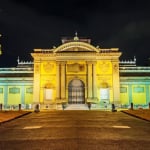
5 Highlights of the Nara National Museum! Learn About Nara’s History Here
-
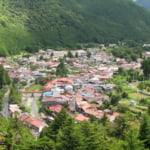
7 must-see tourist spots to enjoy Dorogawa Onsen and nature in the historic post town of Tenkawa Village
-
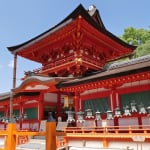
Kasuga Taisha: One of Nara’s Premier Power Spots! Here Are the Tourist Highlights!
-
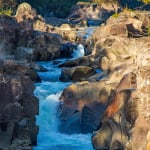
[3-Day Autumn Weekend] Must-Visit Destinations in Japan This September – Avoid the Crowds!
-

Perfect for Weekend Trips Along the Kintetsu Line! A Weekend Journey with the “Kintetsu Weekend Free Pass”♪
MOST POPULAR ON nara
-
 1
1Doha: Must-see Attractions in the Capital of Qatar
-
 2
2Toronto: 10 Things to do in this Picturesque Canadian City
-
 3
3Amarillo: A City Famous for It’s Amazing Canyons, Great History and Music
-
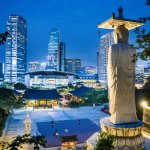 4
4South Korea: Dazzling Scenery, Rich Culture and Fascinating History
-
 5
5Kuwait: A Country in Middle East Asia Famous for Hot Sand Dunes and Stunning Cityscape

